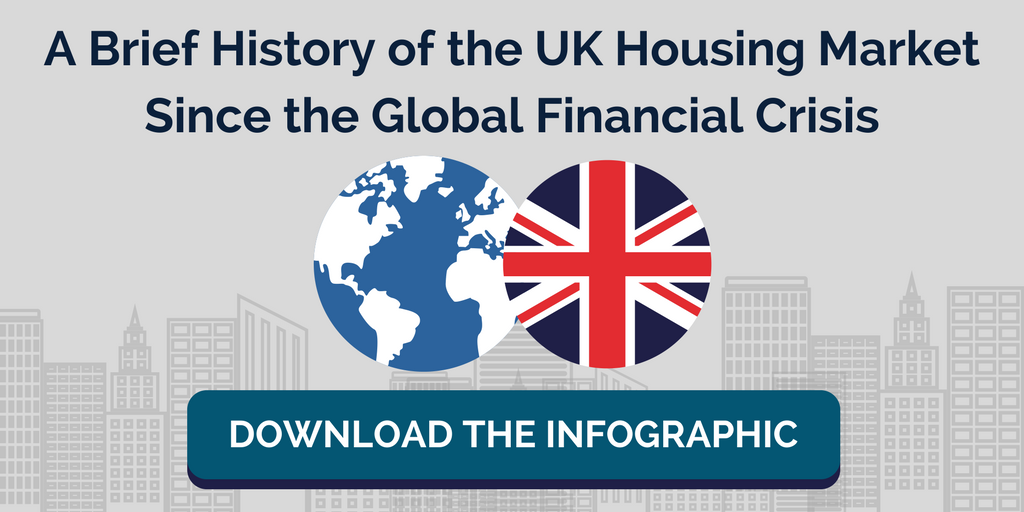A Brief History of the UK Housing Market Since the Global Financial Crisis
Ten years have elapsed since the Global Financial Crisis.
Stemming from a surge in subprime lending, the credit crunch dragged the world through shockwave after shockwave, gaining momentum as it snowballed across the globe. It became widely regarded as the worst crash since the Great Depression in the 1930’s.
Last month, Savills released a research report titled “Ten Years On: How the Credit Crunch Transformed the UK Housing Market.” In tracking market sentiment and price fluctuations, Lucian Cook declared, “The Global Financial Crisis has fundamentally changed the UK housing market.”
The report draws attention to the way in which the market has reacted (and been tended to) over the last 10 years. Under new regulations, shifts in global appeal and a variety of incentives, the market has dramatically changed shape.
Movements in the market have been examined under a microscope
Though to many, it’s likely that such change isn’t news. As a testament to Britain’s obsession with property, over the years, minor movements in the market have been examined under a microscope and forced into the limelight with anxious chatter.
Crash speculations have continued, yet fear has been matched with an equal amount of hopefulness. It seems the industry as a whole has been watched with an unshakeable tenacity.
Though amidst the noise, perspective is often lost, and property’s value as a long term asset is easily forgotten. In an article published by The Guardian on the matter, the highest rated response was, “If you have a house for sale, drop the price because in six months it’s going to be a lot lower.”
In the same way that stock prices rise and fall, house prices follow their own cycle, too. In introducing the Savills’ report, Cook describes witnessing - in the space of just 10 years; unsustainable growth, prompt market correction, momentary recoveries, further falls and sustainable recovery as regulations cooled the market.
The extent of change, over the last 15 years, has been a monthly rise of 0.4%
In light of such cycles, and for property investors who recognise the value of long-term holding periods, such short term noise exists as just short term noise.
Our research, which averaged the monthly variances provided by Nationwide’s UK Monthly Indices (Post ’91) shows that the extent of change between August 2002 and August 2017 has been a monthly rise of +0.4%. Undoubtedly, house prices surged during some months, and fell during others.
Yet in support of long-term investing, a landlord who had held a property through the global financial crisis - an event that is regarded as the worst crash in decades, would have redeemed a loss in capital value through the power of time.
Stepping back to gain perspective: A ten-year timeline
In our infographic, which has been based on Savills’ report, we track the way in which the UK housing market reacted to the Global Financial Crisis, both organically and intentionally, through regulation and encouragement. Click on the image below to download or view “A Brief History of the UK Housing Market since the Global Financial Crisis.”
By Jenna Kamal
